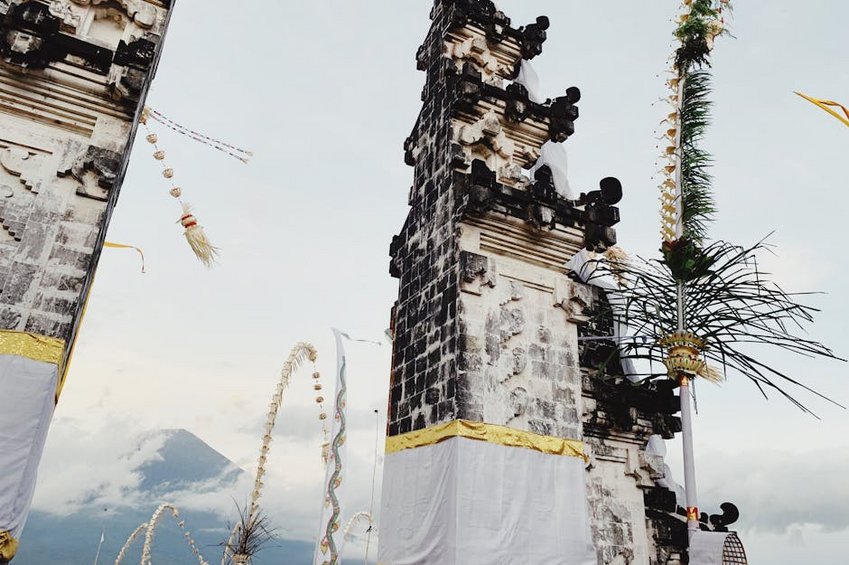Bali Temples: A Spiritual Journey Through the Island of Gods
Exploring Bali temples offers one of the most profound cultural experiences you can have in Southeast Asia. These sacred sites, scattered across the island’s dramatic landscapes, provide incredible insight into Balinese Hinduism and local traditions. When you visit Bali temples, you’re not just seeing beautiful architecture – you’re witnessing living spiritual centers where daily offerings and ceremonies continue ancient practices. The island boasts over 20,000 temples, each with unique characteristics and significance. From majestic sea temples perched on cliffs to mysterious forest sanctuaries hidden in jungles, these spiritual sites showcase Bali’s rich cultural heritage. Your journey through Bali temples will reveal why this island truly deserves its nickname “Island of Gods” and create memories that last a lifetime.
Bali Temples Essential Information – Understanding the Sacred Sites
Before visiting any Bali temples, understanding their cultural significance and proper etiquette will greatly enhance your experience. Balinese temples, known as “pura,” serve as places of worship and community gathering. Unlike Western religious buildings, these open-air complexes follow a specific architectural philosophy based on the Balinese concept of balancing opposing forces. Most temples feature three main courtyards representing different realms of existence. You’ll notice distinctive architectural elements like split gates (candi bentar), multi-tiered shrines (meru), and guardian statues throughout these sacred spaces. Remember that these are active places of worship, so respectful behavior is absolutely essential. Dressing appropriately demonstrates respect for local customs and ensures you can fully appreciate these magnificent spiritual sites.
Proper Temple Attire and Etiquette – What You Need to Know
- Always wear a sarong and sash around your waist, which you can usually rent at temple entrances for a small donation
- Avoid wearing revealing clothing; shoulders and knees should be covered even under your sarong
- Never point your feet toward shrines or religious objects as this is considered highly disrespectful
- Women should avoid entering temples during menstruation according to local customs
- Keep your voice low and avoid disruptive behavior during ceremonies or prayers
- Ask permission before taking photos of worshippers or during religious ceremonies
- Budget travelers can expect to spend $15-25 daily covering temple entrance fees ($2-5 per temple), sarong rental ($1), and public transportation between sites
- Mid-range visitors typically budget $40-60 daily including private driver ($35-50/day), guide services ($20-30), nicer meals, and donations at temples
- Luxury experiences range $100-200+ daily featuring premium guided tours, photography sessions, special ceremony access, and high-end transportation
- Indonesia Tourism Official Guide to Bali
- Bali Tourism Board Temple Information
Offerings and Ceremonies – Key Cultural Details
Throughout Bali temples, you’ll witness beautiful daily offerings called “canang sari” containing flowers, rice, and other symbolic items. These small baskets represent gratitude to the gods and balance between opposing forces. Major temple ceremonies, known as “odalan,” occur according to the Balinese 210-day calendar and feature elaborate decorations, traditional music, and vibrant processions. If you encounter a ceremony during your visit, consider yourself fortunate to witness this authentic cultural expression. However, maintain respectful distance unless invited to participate more closely. The melodic sounds of gamelan music and sight of beautifully dressed worshippers create unforgettable memories of Bali’s living spiritual traditions.

Bali Temples Planning Your Trip – When and How to Visit
Planning your temple visits requires consideration of timing, transportation, and cultural events. The best time to explore Bali temples is during the dry season from April to October when rainfall is minimal and temperatures are comfortable. Early mornings (before 10 AM) offer cooler temperatures, fewer crowds, and beautiful soft lighting for photography. Many temples host special ceremonies during full moons and specific temple anniversaries, which can be incredible to witness but may limit tourist access. Consider hiring a local guide for at least your first temple visit – they provide valuable cultural context and help navigate etiquette requirements. Budget approximately $50-100 per day for temple visits including transportation, entrance fees, donations, and guide services if desired.
Best Time to Visit Bali Temples
The ideal period for visiting Bali temples spans from May to September when rainfall is lowest and humidity is more comfortable. December through February sees more rain but also fewer tourists at popular sites. Balinese holidays like Galungan and Kuningan (occurring every 210 days) bring vibrant decorations and ceremonies to temples but also larger crowds of local worshippers. If you want to witness these special events, check the Balinese calendar in advance. Sunrise visits provide the most magical experience at seaside temples like Tanah Lot and Uluwatu, while forest temples like Goa Gajah feel most mystical in the late afternoon light. Avoid visiting during midday heat when temperatures can become uncomfortable for exploration.
Budget Planning and Temple Visit Costs
Essential Preparation Checklist
Proper preparation ensures you enjoy your Bali temples experience comfortably and respectfully. Pack lightweight, breathable clothing that covers shoulders and knees for wearing under sarongs. Comfortable walking shoes are essential as temple complexes involve considerable walking on uneven surfaces. Bring small bills (Indonesian Rupiah) for entrance fees, donations, and sarong rentals since most temples don’t accept credit cards. Include sunscreen, hat, and reusable water bottle since you’ll spend significant time outdoors. Research temple-specific requirements – some sites like Besakih have additional dress codes or require local guides. Download offline maps since some remote temple locations have limited connectivity. Finally, maintain flexible expectations as temple access may change due to ceremonies or weather conditions.
Bali Temples Top Attractions and Activities – Must-Visit Sacred Sites
With thousands of temples across Bali, choosing which ones to visit can feel overwhelming. Focus on experiencing different temple types: sea temples, mountain temples, water temples, and royal temples each offer unique atmospheres and architectural styles. The most famous Bali temples like Tanah Lot and Uluwatu attract more visitors but provide stunning coastal settings perfect for sunset photography. Lesser-known gems like Gunung Kawi and Pura Luhur Batukaru offer more serene experiences surrounded by nature. Consider dividing your temple visits geographically – concentrate on temples in Ubud one day, then explore southern coastal temples another day. Allow at least 2-3 hours per major temple complex to fully appreciate the architecture, atmosphere, and spiritual significance without rushing.
Must-See Temple Highlights
No visit to Bali is complete without experiencing these iconic temples. Tanah Lot, perched dramatically on a rocky offshore island, provides arguably Bali’s most photographed temple scene especially at sunset. Uluwatu Temple occupies a breathtaking clifftop position where traditional Kecak fire dances perform nightly against ocean backdrop. Besakih Temple, known as the “Mother Temple,” represents Bali’s largest and holiest temple complex on Mount Agung’s slopes with stunning mountain views. Tirta Empul features sacred spring water where locals and visitors participate in purification rituals. Ulun Danu Bratan Temple appears to float on Lake Bratan surrounded by cool mountain air and beautiful gardens. Each offers distinct experiences from ocean vistas to mountain serenity that showcase Bali’s diverse spiritual landscape.
Hidden Gems and Local Favorites
Beyond the famous sites, several less-crowded Bali temples provide equally rewarding experiences. Pura Lempuyang, known as the “Gateway to Heaven,” features spectacular views of Mount Agung through its famous split gate – though be prepared for over 1,700 steps to reach the main temple. Goa Lawah (Bat Cave Temple) houses thousands of bats in a natural cave with unique spiritual significance. Pura Taman Ayun showcases exquisite Meru towers and moat surrounds in a beautiful garden setting. For truly local experiences, visit village temples during morning offerings when women bring beautifully arranged baskets of flowers and food. These less-visited sites often provide more intimate cultural encounters and opportunities for quiet reflection away from tourist crowds.
Bali Temples Practical Travel Information – Getting Around and Staying Nearby
Navigating between Bali temples requires some transportation planning since they’re scattered across the island. Hiring a private driver remains the most convenient option, costing approximately $35-50 for 8-10 hours including fuel and parking. This allows flexibility to visit multiple temples in one day without worrying about directions or parking difficulties. Ride-sharing apps like Grab work well for single temple visits but may have limited availability in remote areas. Consider staying in central locations like Ubud or Sanur that provide good access to temples in multiple regions. Many visitors combine temple visits with other attractions like rice terraces, waterfalls, or traditional villages to create full-day itineraries. Always confirm temple opening hours as they can vary, and some close for special ceremonies with little advance notice.
| Transportation Type | Features and Considerations | Price Range (USD) |
|---|---|---|
| Private Driver | Most convenient, door-to-door service, includes parking | $35-50 per day |
| Ride-Sharing (Grab/GoJek) | Good for single destinations, limited in remote areas | $5-15 per trip |
| Scooter Rental | Maximum flexibility, requires international license | $5-8 per day |
| Tour Group | Guided experience, fixed itinerary, includes entries | $40-80 per person |


